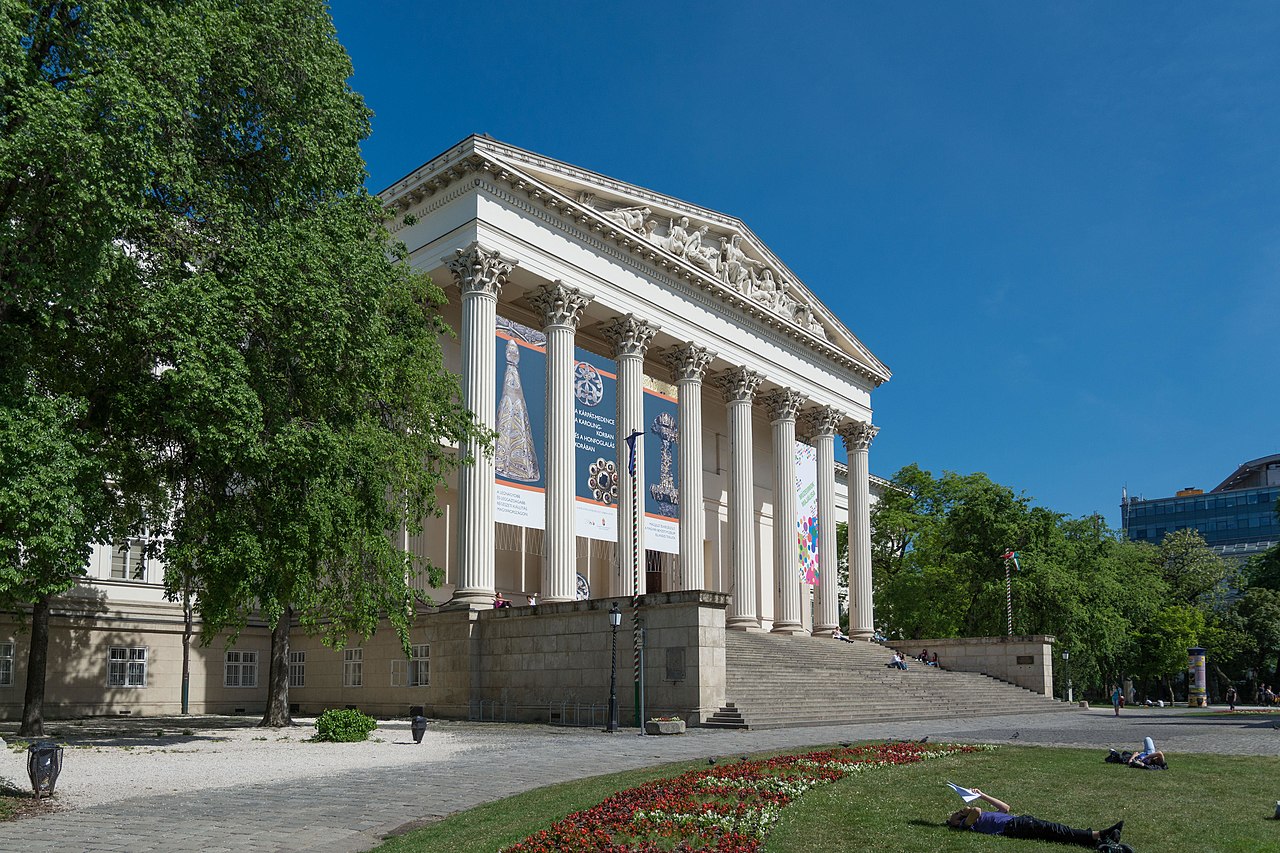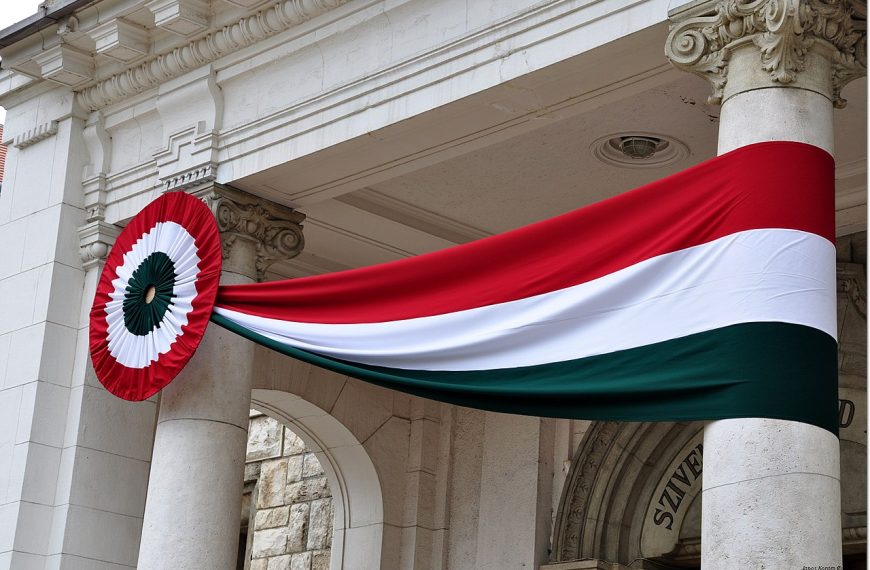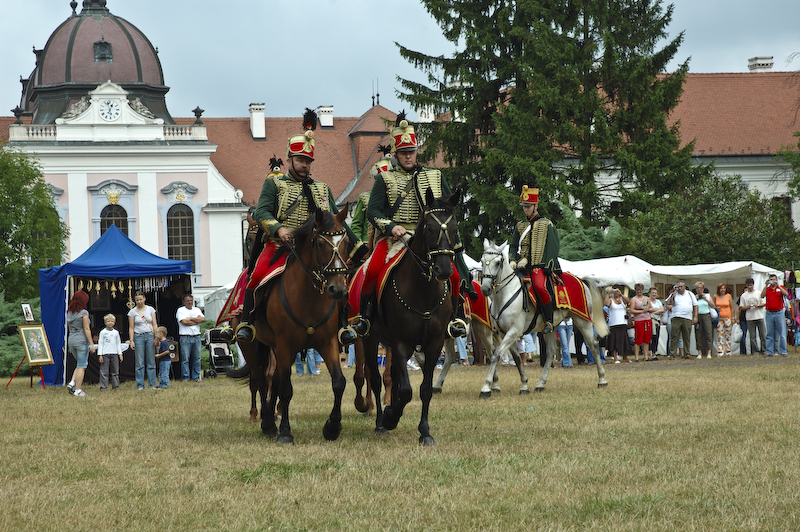The National Museum of Hungary stands as a venerable institution dedicated to preserving and interpreting the nation’s history and cultural heritage. It serves as a guardian of Hungarian identity, offering an in-depth exploration of the country’s evolution from its prehistoric roots to contemporary times.
The museum’s curated exhibits provide an insightful narrative of Hungary’s defining moments, from the rise and fall of empires to the struggles for autonomy and the pursuit of freedom. Esteemed for its extensive collections, the museum enlightens visitors about the social, political, and artistic milestones that have shaped Hungary.
As a repository of knowledge, it invites those who value freedom to understand the complex tapestry of Hungarian history through its meticulously preserved artifacts and engaging displays.
Key Takeaways
- The Hungarian National Museum is a neo-classical style building with architectural grandeur that reflects the country’s modern and contemporary history.
- The museum’s prehistoric and medieval collections offer a tangible link to ancient civilizations and showcase the resilience and complexity of Hungarian culture.
- The National Uprisings Exhibit vividly portrays Hungary’s quest for independence and marks a defining moment in the country’s history.
- The museum’s modern cultural exhibits provide insight into contemporary legislation, showcase Hungary’s living heritage, and celebrate the diversity of Hungarian culture through the influence of modern art.
The Museum’s Origins
How did the Hungarian National Museum, an emblem of national heritage, originate from Count Ferenc Széchényi’s initial donation in 1802?
The foundation of this pivotal cultural institution began with his generous offering of books, maps, and medals.
Nestled in the heart of Budapest, the museum traces the intricate history of Hungary, preserving stories of triumph and resilience.
The collection, which flourished through subsequent contributions from the Palatine and patriotic countrymen, became the cornerstone of the National Széchényi Library.
The Hungarian National Museum played a major role in the nation’s pursuit of freedom, especially during the 1848 Revolution.
Legislation enacted in 1807 officially established the museum, charting a course for it to become a beacon of national identity and pride.
Architectural Marvels
Transitioning from its historic origins, the Hungarian National Museum captivates visitors with its Neo-classical architectural grandeur, including the meticulously crafted statues by Raffael Monti and the ornate ceiling frescoes by Károly Lotz and Mór Than.
| Architectural Element | Artist/Architect |
|---|---|
| Neo-classical style building | Architect Mihály Pollack |
| Statues of the Portico | Raffael Monti |
| Ceiling Frescoes | Károly Lotz & Mór Than |
The Hungarian National Museum, a neo-classical style building designed by Mihály Pollack, stands as a testament to the country’s modern and contemporary history. Within the new building of the museum, which resides in Budapest VIII, visitors are transported through time via its exhibits and architectural splendor. The Hungarian National History Museum not only preserves history but serves as a beacon of cultural identity and freedom.
Prehistoric Collections
The Hungarian National Museum’s prehistoric collections offer a tangible link to ancient civilizations through a diverse array of artifacts, from Arpad-era relics to Roman stone engravings.
These prehistoric collections, housed as a permanent exhibit, allow visitors to traverse the depths of National Hungarian history, from the Avar period ending to the early Modern stone inscriptions.
A notable highlight is the collection of ancient Roman stone inscriptions and carvings, meticulously preserved and displayed in the museum’s basement.
This permanent exhibit is placed to narrate the story of Hungary’s ancestors, featuring various stone relics that encapsulate the essence of bygone eras.
Each piece in the exhibit serves as a testament to the rich cultural tapestry woven throughout Hungary’s storied past.
Medieval Legacy
Delving into Hungary’s medieval legacy, the National Museum presents an impressive array of artifacts, from the Coronation Mantle to Byzantine enamel plaques, that epitomize the nation’s historical grandeur.
The permanent exhibit is focused on Medieval and Early Modern periods, where the first floor displays a rich tapestry of the region’s past. This display covers topics from the foundational medieval Hungarian Coronation rites to the tumultuous Rákóczi War, offering visitors a comprehensive narrative of power, resistance, and identity.
The history section then ends with a transition to the modern era, reflecting the museum’s evolution since it moved to its current neo-classical residence. Each piece within the Medieval legacy collection is a testament to the resilience and complexity of Hungarian culture, inviting audiences to appreciate the threads of freedom woven through the country’s history.
National Uprisings Exhibit
Building upon the medieval legacy exhibit, the National Uprisings Exhibit at the National Museum offers a vivid portrayal of Hungary’s quest for independence, marking a defining moment in the nation’s history. Engage with the spirit of the Revolution, where the stirring words of Sándor Petőfi’s ‘Nemzeti dal’ fueled a movement.
This exhibit immerses visitors in the fervor of national uprisings, displaying military attire and relics post World War, which weave a narrative of resilience and determination. The history of Hungary is encapsulated here, charting the course from oppression to the ongoing journey of sovereignty.
Contemporary history is covered, providing context to the enduring impact these uprisings have had on Hungarian society and identity, encapsulating the essence of freedom’s relentless pursuit.
Cultural Renaissance
Numerous artifacts and artworks within the National Museum meticulously document Hungary’s Cultural Renaissance, illuminating the myriad ways in which this era shaped the nation’s identity and artistic expression.
The Hungarian National Museum, a brainchild of Count Ferenc Széchényi, stands as a testament to this transformative period. Exhibits trace the fervor of change, highlighted by the famous poem ‘Nemzeti dal’ by Sándor Petőfi, which became a catalyst for the 1848 Revolution.
In commemoration, the National Commemorations Day is observed, reflecting upon the contributions that led to modern societal reforms. A memorial tablet to Sándor Petőfi and the statue of János Arany are prominent features that honor the cultural icons.
The museum’s proximity to the National Parliament underscores the intertwined nature of cultural resurgence and political evolution.
World War Remnants
Amidst the extensive collection of the Hungarian National Museum, the remnants of World Wars are poignantly displayed, providing visitors with a stark reminder of the country’s tumultuous 20th-century history.
The permanent exhibit looks at various aspects of World War II, juxtaposing military attire and various artifacts against the backdrop of Hungarian society’s struggles and resilience. Contemporary history covered begins with the harrowing events of the global conflicts and extends to the fall of the communist regime, marking the country’s transition to modern times.
The exhibit, a vital component of the modern day National Széchényi Library’s historical narrative, invites reflection on the sacrifices that shaped Hungary.
The History Museum was officially tasked with preserving these narratives, ensuring that the lessons of the past remain accessible for future generations.
Contemporary Reflections
Frequently, the Hungarian National Museum’s temporary exhibits provoke thoughtful discourse on current societal issues, mirroring the dynamic nature of Hungary’s cultural landscape. The modern displays not only commemorate historical events like the Revolution but also challenge visitors to reflect on the present. A recent addition to the exhibits critiques the remnants of the communist system, while another installation juxtaposes the monuments of the past with the legislative actions of the National Parliament.
| Exhibits | Significance |
|---|---|
| Revolution Artifacts | Symbol of national pride and freedom |
| Communist Era Displays | Reflection on past regimes |
| Interactive Monuments | Engagement with history’s relevance |
| Parliamentary Decisions | Insight into contemporary legislation |
| Modern Cultural Exhibits | Showcase of Hungary’s living heritage |
These contemporary reflections at the National Hungarian Museum offer a profound connection between historical legacies and modern identity.
Visiting Information
Visitors planning to explore the Hungarian National Museum should allocate approximately 2 to 3 hours for a thorough experience of its exhibits and collections. Nestled in the heart of Budapest at Pollack Mihály tér 2, this museum is a pivotal site that uses artifacts and narratives to weave the tapestry of Hungarian heritage.
As one of the premier museums in Budapest, it offers a rich permanent exhibit alongside captivating temporary displays. For a comprehensive visit, a Walking Tour may enhance your understanding of each piece’s significance. The museum also provides visiting information to assist guests, ensuring they can fully engage with the history on display.
After immersing yourself in culture, spend time in the museum’s café, a perfect spot to reflect on the day’s journey through Hungary’s storied past.
Frequently Asked Questions
Are There Any Special Programs or Educational Workshops Available for Students or History Enthusiasts at the National Museum?
Yes, the museum offers a variety of educational programs and workshops tailored to engage both students and history aficionados, enriching their understanding of the subject matter through interactive and immersive experiences.
Can Visitors Participate in Interactive Exhibits or Digital Experiences to Engage More Deeply With Hungarian History at the Museum?
Surprisingly, in an age of digital detachment, the National Museum offers interactive exhibits that immerse visitors in Hungarian history, fostering a connection to the past with engaging, technology-enhanced educational experiences.
How Does the National Museum Accommodate Visitors With Disabilities, Including Those Who Require Wheelchair Access or Have Sensory Sensitivities?
The National Museum ensures accessibility through ramps and elevators for wheelchair users, and offers specialized guides for those with sensory sensitivities, affirming its commitment to inclusivity and a barrier-free experience for all visitors.
Does the National Museum Offer Any Temporary Exhibitions or Collaborations With International Museums That Feature Artifacts or Themes Not Typically Covered in the Permanent Collection?
Yes, the National Museum frequently hosts temporary exhibitions and international collaborations that showcase rare artifacts and diverse themes, expanding beyond its permanent collection to offer visitors a kaleidoscope of global history and culture.
What Measures Are in Place at the National Museum to Preserve Delicate Artifacts and Ensure the Longevity of the Collections in the Face of Environmental Challenges or Potential Deterioration?
The museum employs advanced climate control systems, meticulous conservation practices, and regular condition assessments to protect artifacts from deterioration, ensuring their preservation for future generations to study and appreciate.
Conclusion
In conclusion,
the National Museum stands as a veritable treasure trove, encapsulating the soul of Hungary within its walls.
Visitors emerge with a profound understanding of the nation’s tumultuous yet vibrant history, having witnessed a panorama that stretches from the whispers of prehistory to the echoes of contemporary times.
This bastion of culture and history serves not merely as a repository of artifacts but as an indelible chronicle of Hungarian perseverance and identity.





